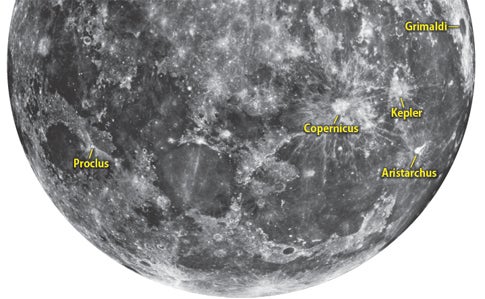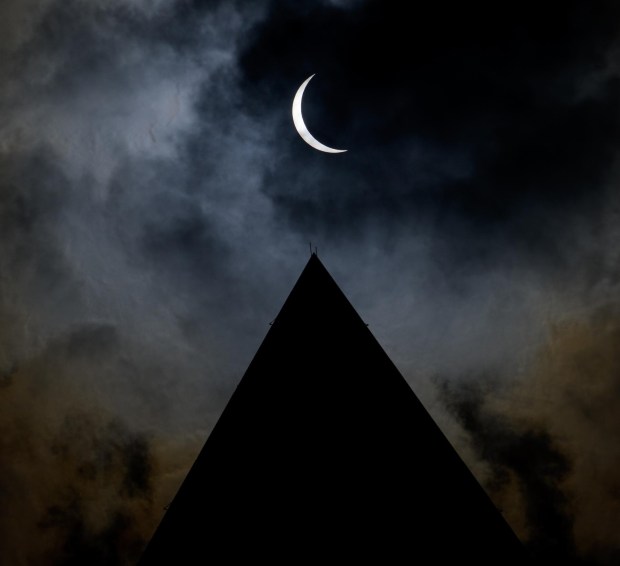However, some lunar features — like relatively young craters and their ray systems — are best seen when the Moon is at or near full phase. To explore the Full Moon telescopically without ravaging your retina, you’ll need to reduce the glare. For under $20, you can buy a neutral density filter (25-percent light transmission for small scopes; 13 to 18 percent for larger instruments). A variable polarizing filter is more versatile; which lets you adjust the amount of light entering the eyepiece. Expect to pay upwards of $50.
In my November 2005 column, I described inexpensive planetary filters that you can make from GamProducts, Inc., theatrical filters. For making lunar filters, I found their CineFilter .6 (item number 1516) and .9 (1517) neutral-density filters work nicely with the Moon. Generous 3½” by 4″ samples — large enough to make four filters of each — are included in GamProducts’ CineFilter sampler swatch book.
Wabash Valley Astronomical Society member Marilyn Sameh mounts homemade filters on lids from the plastic jugs that hold dairy products. She writes: “Take a washed lid, and whittle some threads on the inside with an X-ACTO knife. Resting the lid upside down on a small pill bottle, cut about a ¾” hole in the lid. Holding the lid in hand, expand the hole, making it a little less than 1 1/8” across.
“To attach the filter material to the lid, use a 1/8“-thick sheet of foam and some plasticized cardboard material. Make the ring the size of the lid’s top — not quite 1½”. Place tacky white glue on one side of the ring, then place it down on a circular 1½” piece of the filter material. After it dries, trim the edges and glue it to the lid.
“Make sure to determine if the lid will fit over your eyepieces, either with the eyeguard up or turned down, beforehand.”
Questions, comments, or suggestions? E-mail me here.










